Aerodynamics of Real-World Bicycles
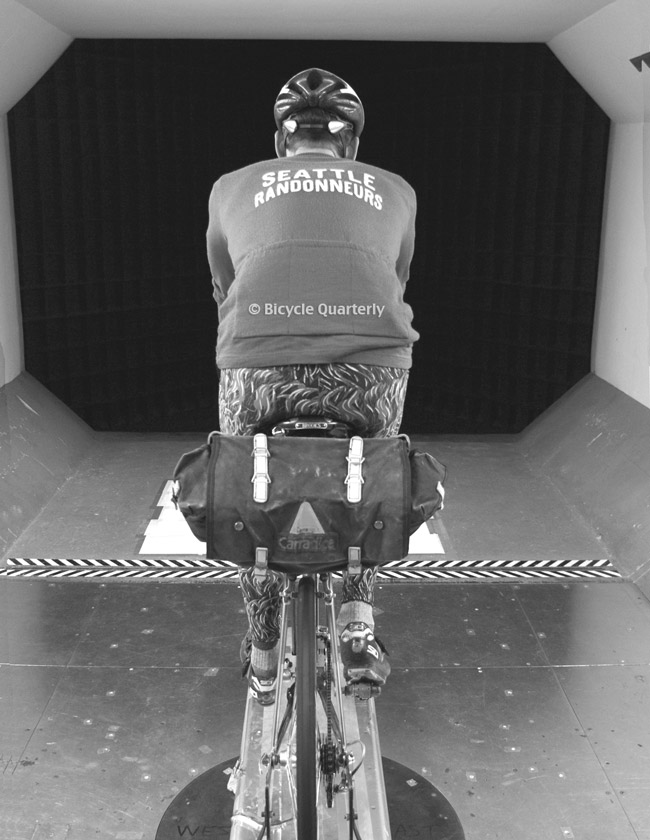
Wind resistance is one of the most important resistances a cyclist has to overcome (together with the rolling resistance of the tires). Most wind tunnel testing has been done for time trial equipment, but aerodynamics are important for real-world riders as well.
Without any data, many people assumed that fenders and handlebar bags would increase the wind resistance, whereas saddle bags were shielded behind the rider, and thus would not affect the resistance. Others maintained that fenders could act as fairings (racing motorbikes have them!) and make the bike more aerodynamic. Similarly, it is easy to envision wider tires having higher wind resistance, but how important is this effect? And how does it compare to the rider wearing a jacket?
To look into all these factors, we spent 2.5 days in the wind tunnel of the University of Washington a few years ago. A top-tier wind tunnel is an impressive facility. Usually, wind tunnel time costs $500/hour, but the Department of Aeronautics allows students free wind tunnel time for their projects, and two students were keen on studying bicycle aerodynamics, so we collaborated on this study.
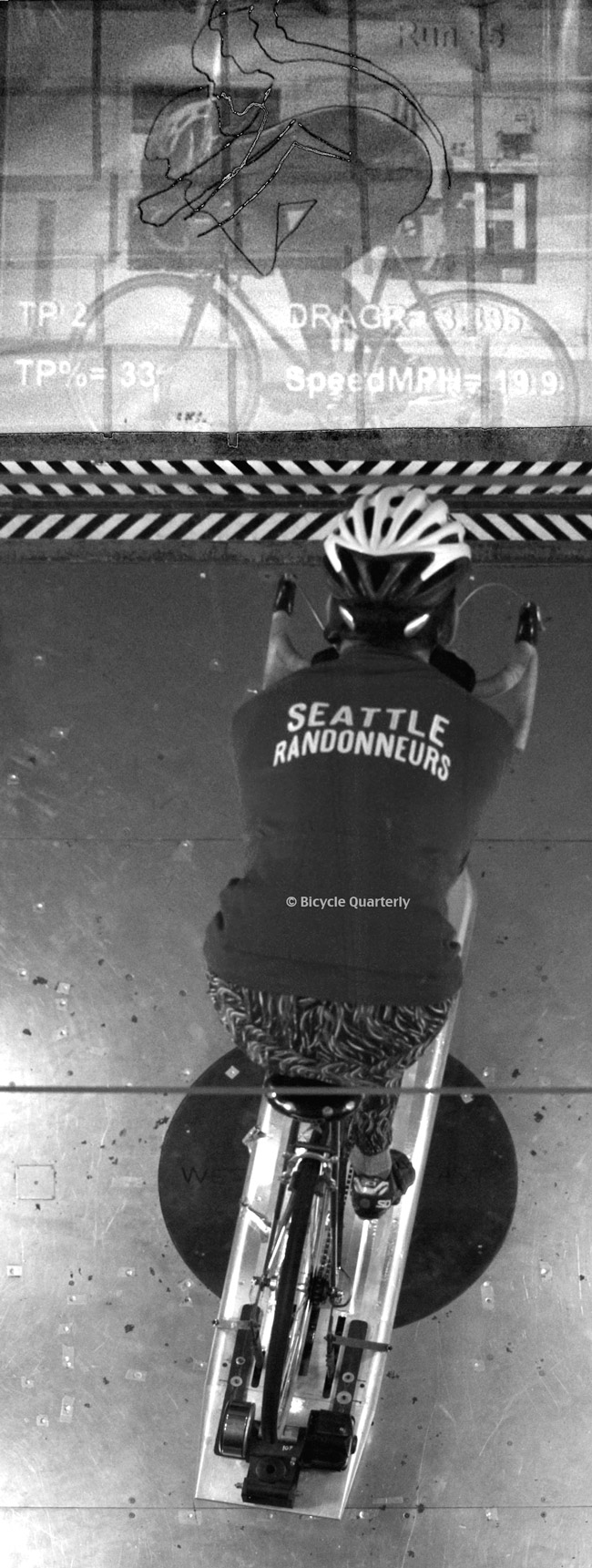
As a result, I got to ride a trainer for two days at 111 rpm and 20 mph, while keeping my riding position constant as we changed various parts on the bike to test how each affected the aerodynamics. The trainer originally had been built for Lance Armstrong, who had tested his time trial position in the wind tunnel a year earlier. The setup could be rotated by remote control to test the effects of crosswinds. A camera projected my image in front of me, so I could check my position against outlines traced onto the floor.
Some people do wind tunnel testing without the rider, because a pedaling rider introduces noise into the measurements. However, testing only the bicycle makes the results almost meaningless, because the rider obviously affects the aerodynamics of the bike. Fortunately, when we repeated one particular set-up at the beginning, middle and end of each test session, our results were very consistent showing that the noise introduced by the rider was very small. (We found the same when we tested tires on real roads with a rider on board. An experienced rider can assume the same riding position time and again.)
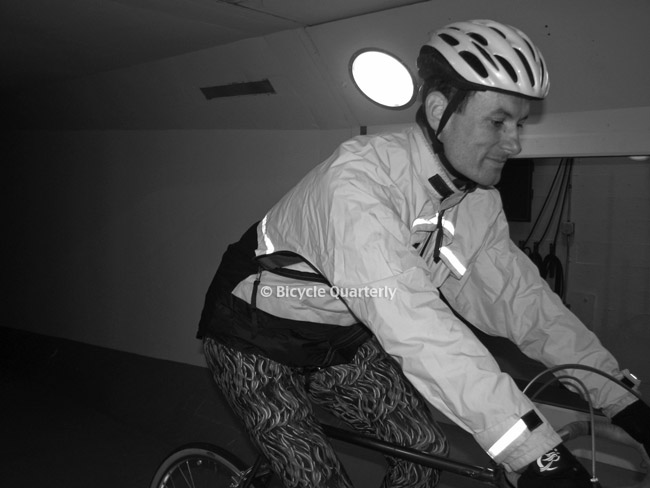
What about the results? The most important finding probably does not come as a surprise: What you wear and how you position yourself on the bike has the largest impact on the aerodynamics. For example, simply raising your stem by 20 mm (3/4 in) increases the drag by 5%. (For comparison, other studies indicate that aero wheels bring an advantage of only 3%.) The difference between a close-fitting jacket and a looser cycling jacket is a full 8% increase in the overall wind resistance of your bike!
Perhaps more surprising to many, front bags were more aerodynamic than rear ones. A handlebar bag was more aerodynamic than a Carradice saddlebag that extended just slightly beyond the hips of the rider (see photo at the top of this post). Front panniers (on low-rider racks) were more aerodynamic than rear panniers.
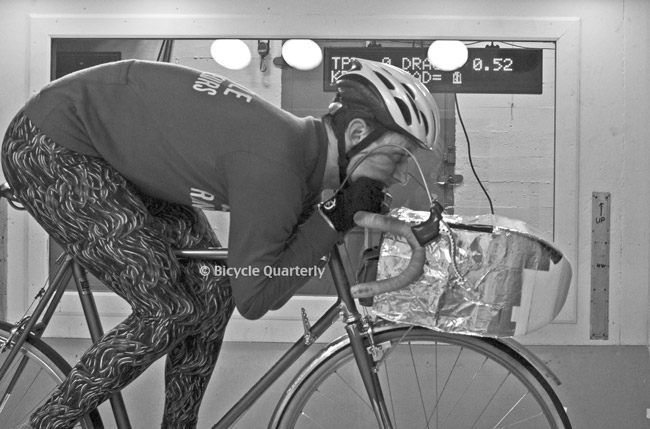
Fairings actually increased the wind resistance in most positions. We tested many different fairings, and the photo above shows the “best” setup, and even that decreased the wind resistance only if the rider assumed a full aero tuck. It’s obvious that fairings only work if they form one body with the rider. Otherwise, you are just pushing one extra object through the air.
Speaking of the aero tuck, that was perhaps the most eye-opening result: A full aero tuck reduces the rider’s air resistance by 38% compared to riding “on the hoods.” There is nothing you can do to your bike that makes even nearly as much of a difference at high speed!
Well-mounted metal fenders do not affect the bike’s aerodynamics. The front section of each fender shields the tire and reduces the wind resistance, while the rear fender increases the aerodynamic drag. The two effects cancel each other.
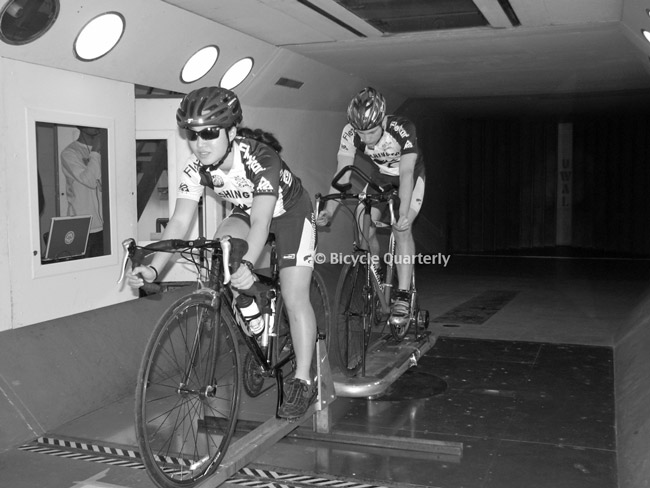
We also tested how the effect of drafting. Everybody knows that riding behind another cyclist decreases your wind resistance, but we also found that the front rider benefits from the draft, receiving a push from the rear rider.
And what about those wide tires? The data showed a very slight increase in air resistance when going from 25 to 32 mm tires, but the difference was too small to be statistically significant. It may be real, or it may just be in the noise of the data collection. In any case, it’s smaller than many other factors, such as your stem height or the clothes you wear.
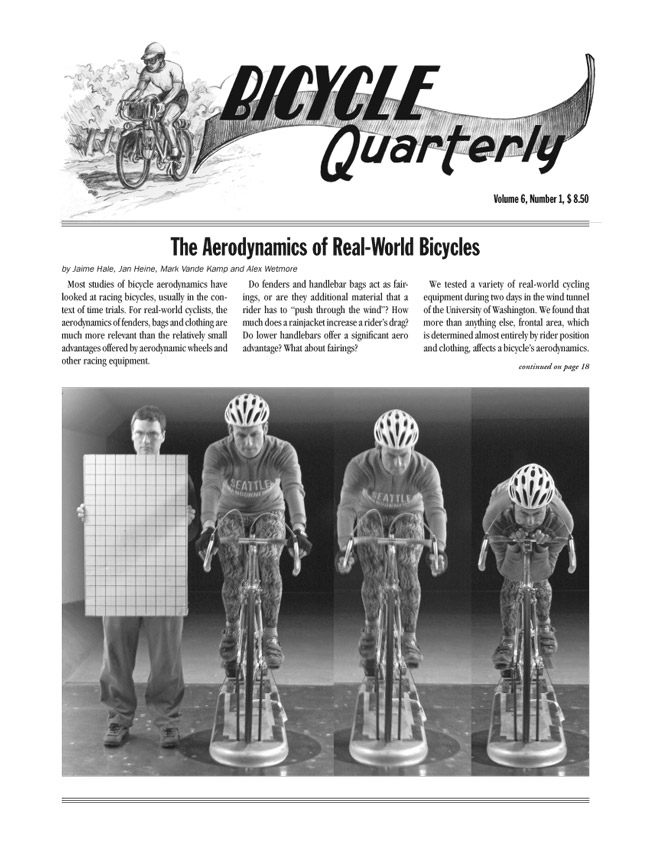
There were many other things we tested during those 2.5 days in the wind tunnel. It was very interesting, and it has influenced how we set up our bikes. The full results were published in Bicycle Quarterly Vol. 6, No. 1 and Vol. 6, No. 3.


